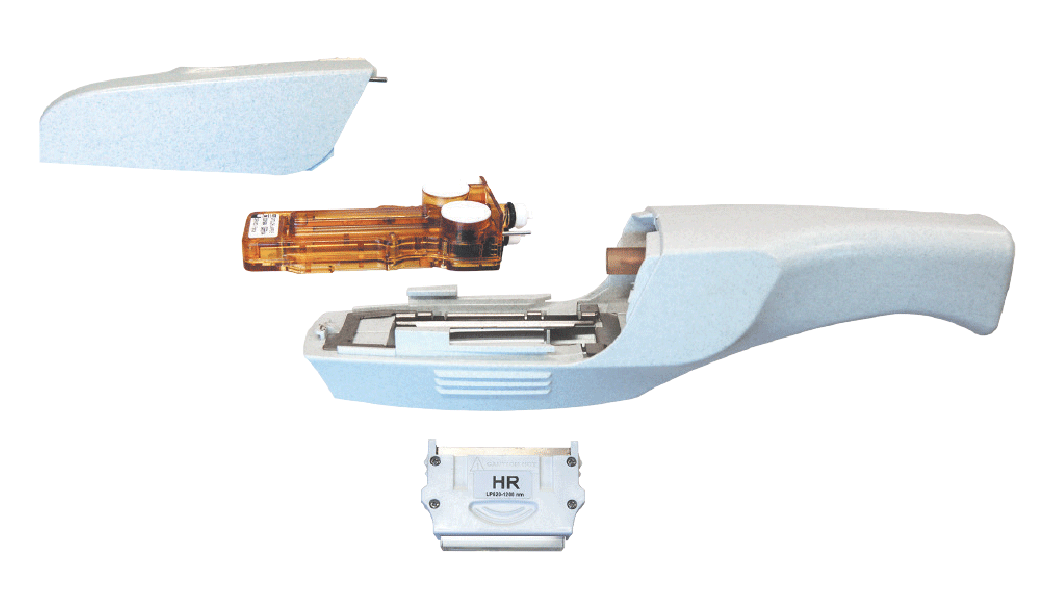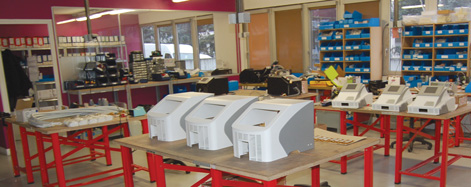MDFLASH4®
 DERMEO is launching a new generation of pulsed light devices for professionals, with a revamped design and at the cutting edge of the latest technological innovations (touchscreen, optional remote access to monitor the use of your device, etc ...).
DERMEO is launching a new generation of pulsed light devices for professionals, with a revamped design and at the cutting edge of the latest technological innovations (touchscreen, optional remote access to monitor the use of your device, etc ...).
The MDFLASH4® system for professionals in the medical and aesthetic industry is a device of the latest generation pulsed light, with a max power of 40 joules / cm² and with the medical CE mark in Class IIb.
The MDFLASH4® device enables the operator to treat:
- Hair removal on light skin
- Hair removal on dark skin
- Rejuvenation
- Pigmented lesions
- Vascular lesions
- Acne treatment
Power combined with expertise and diagnostics.
MDFLASH4® The device, thanks to its concentrated technology, provides the same fluence over the whole surface of the optical guide. A single blast of flashes is necessary for a permanent result, and an ease of use which is unmatched in the market.
Its efficiency and safety have been proven by dermatologists, and a clinical study on voluntary patients at the hospital la PITIE SALPETRIERE in Paris.
Handpiece and filtrations
This new generation of devices has: see more...Generator and software
This new generation of pulsed light devices includes: see more...French manufacturing and international certifications
see more...Technology
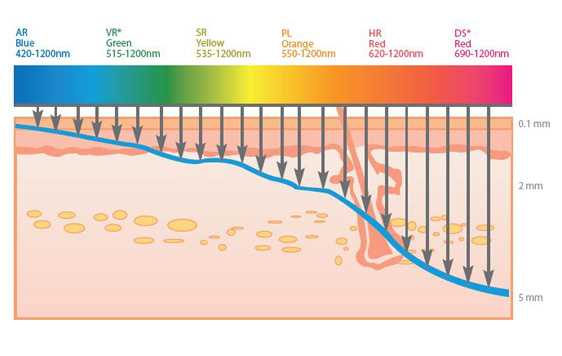
The technology of pulsed light is based on the selective photothermolysis principle (photo: light, thermo: heat, lysis: destruction, selective: targeted). It transforms electrical energy into intense bursts of radiant energy through a lamp containing a noble gas, xenon. The resulting radiation is a bright flash of high intensity, which covers a spectrum of wavelengths ranging from visible light to close infrareds (spectrum band from 420 nm to 1200 nm). The polychromatic light is absorbed by chromophores (melanin, oxyhemoglobin, porphyrin, water), which are pigments absorbing light and reacting to the photothermal effect. This is the phenomenon that leads to the cells destruction or modification. With the cooling water running through the lamp, the infrared light is absorbed, the heat is dissipated and therefore is not transmitted to the skin. It is only the chromophore that is targeted by the light, so there is no risk of burns.
Various filtrations are available depending on the targeted chromophore (porphyrin, oxyhemoglobin, melanin, water) and the desired application.
Principle
IPL operates according to pulses ; emmission as a train of pulses can cut a bright flash in several pulses in order to distribute energy. The time between each pulse corresponds to the Thermal Relaxation Time (TRT) and thus allows the skin to dissipate heat. To achieve results, maximum energy is needed.
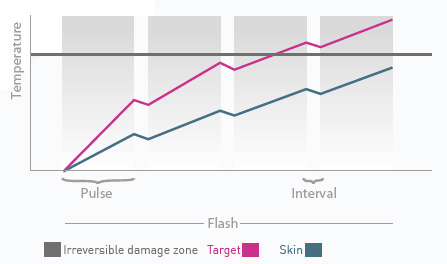
The balancing of pulses provides the same energy density from the first to the last pulse.
Another feature of the pulses is their "square form" also called a "Simmer", it allows us to immediately reach the energy level required and maintain this level.
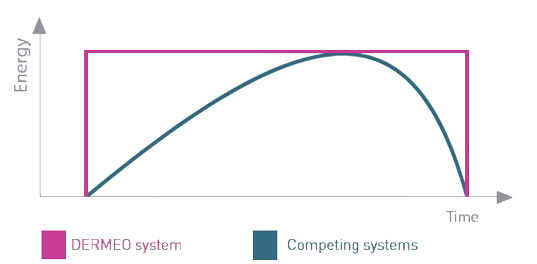
Treatments
The efficacy and safety of DERMEO devices have been proven by cosmetic physicians, and by a clinical study on voluntary patients of the hospital "la PITIE SALPETRIERE".
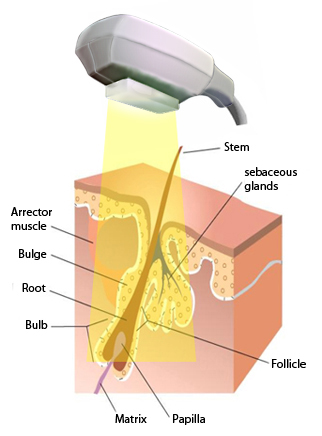 The hair is mainly composed of keratinocytes that synthesize keratin, and melanocytes which are responsible for the production of melanin. In photo-depilation, intense pulsed light is absorbed by the melanin (coloured pigment) contained in the hair. This is then channeled to the “root” (hair shaft, hair follicle, epithelium and matrix). When the light meets a chromophore, it is converted into heat; the thermal effect destroys the germ cells responsible for hair growth. These are located approximately 4-6mm under the skin. Hair acts as a conductor of energy to these cells, therefore, the hair must be in the “anagen” phase (phase at which the bulb and the hair shaft are attached to the root). Light skin contains a small amount of melanin but by using a wavelength of 620-1200nm the melanin in the hair absorbs the light. Multipulse is an important parameter that reflects the TRT (Thermal Relaxation Time) of the skin which is relative to the target chromophore which avoids the risk of burns caused by single flashes that are too long.
The hair is mainly composed of keratinocytes that synthesize keratin, and melanocytes which are responsible for the production of melanin. In photo-depilation, intense pulsed light is absorbed by the melanin (coloured pigment) contained in the hair. This is then channeled to the “root” (hair shaft, hair follicle, epithelium and matrix). When the light meets a chromophore, it is converted into heat; the thermal effect destroys the germ cells responsible for hair growth. These are located approximately 4-6mm under the skin. Hair acts as a conductor of energy to these cells, therefore, the hair must be in the “anagen” phase (phase at which the bulb and the hair shaft are attached to the root). Light skin contains a small amount of melanin but by using a wavelength of 620-1200nm the melanin in the hair absorbs the light. Multipulse is an important parameter that reflects the TRT (Thermal Relaxation Time) of the skin which is relative to the target chromophore which avoids the risk of burns caused by single flashes that are too long.
Protocol
Treatment time: 8 to 10 sessions are required at interval of about 4 to 6 weeks depending on the zone treated.HR: 620 - 1200 nm
Proven results
According to our clinical study conducted by the Group for Research and Evaluation in Dermatology and Cosmetology (GREDECO), on volunteers recruited from the Hospital Pitié-Salpêtrière in Paris, the subjects who completed treatment for hair removal showed excellent results: 80% of hair treated was gone after 2 or 3 sessions.
The hair is mainly composed of keratinocytes that synthesize keratin, and melanocytes which are responsible for the production of melanin. In photo-depilation, intense pulsed light is absorbed by the melanin (coloured pigment) contained in the hair. This is then channeled to the “root” (hair shaft, hair follicle, epithelium and matrix). When the light meets a chromophore, it is converted into heat; the thermal effect destroys the germ cells responsible for hair growth. These are located approximately 4-6mm under the skin. Hair acts as a conductor of energy to these cells, therefore, the hair must be in the “anagen” phase (phase at which the bulb and the hair shaft are attached to the root). Dark skin contains a higher concentration of melanin. From the cornea layer, the skin can act as a competitive chromophore when targeting the melanin in the hair. The specific filtration for dark skin (phototype IV, V and the begining of VI) promotes the absorption of the pulsed light by melanin contained in a hair anchored in tissue, and thus leads to a high level of effiency of the treatments. A specific filtration is necessary up to 690 nanometres, and is limited in exposure using a range of wavelengths from 420 to 690nm which allows the destruction of the bulb, while preserving the skin.
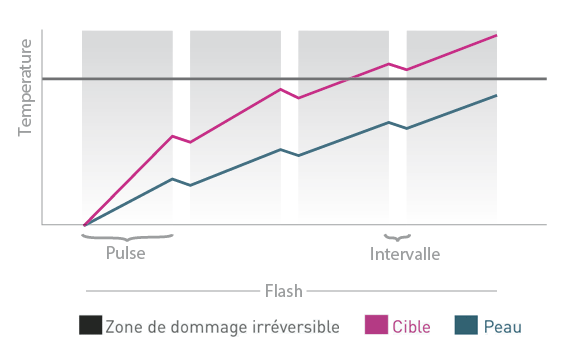
The multipulsed mode is an important parameter that reflects the TRT (Thermal Relaxation Time) of the skin which is relative to the target chromophore which avoids the risk of burns caused by single flashes that are too long. To completely preserve dark skin during hair removal treatments it is necessary to increase the number of pulses, reduce the pulse duration and increase the interval between pulses
Protocol
Treatment time: 8 - 10 sessions are necessary with regular intervals of around 4 to 6 weeks according to the area treated.
DS: 690nm - 1200nm for dark skin.
Proven results
According to our clinical study conducted by the Group for Research and Evaluation in Dermatology and Cosmetology (GREDECO) on volunteers recruited from the Hospital Pitié-Salpêtrière in Paris, the subjects who completed treatment for hair removal on dark skin showed very satisfactory results with an excellent tolerance level.
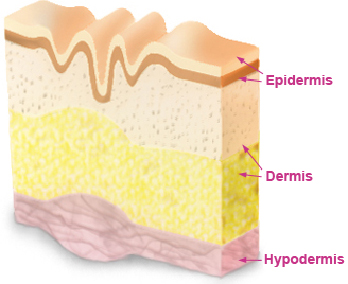 The accumulation of exposure to the sun, smoking, general pollution and aging are accompanied by age related distortion of the structural components of the skin. Fibroblasts, which are one of the main types of cells found in the connective tissue of the dermis, are responsible for the renewal of collagen and elastin. The natural production of collagen starts to decrease from the age of 25 and it further declines from the age of 40. It is important to stimulate cell renewal to prevent the skin from aging in order to take anti-aging action. Intense pulsed light emits the flash of pulsed light at a wavelength of 535nm allowing the stimulation of fibroblast cells. This thermal denaturation of collagen induces neo-collagenesis ; the inflammatory response that results from heating the skin creates a cascade of reactions leading to the synthesis of collagen.
The accumulation of exposure to the sun, smoking, general pollution and aging are accompanied by age related distortion of the structural components of the skin. Fibroblasts, which are one of the main types of cells found in the connective tissue of the dermis, are responsible for the renewal of collagen and elastin. The natural production of collagen starts to decrease from the age of 25 and it further declines from the age of 40. It is important to stimulate cell renewal to prevent the skin from aging in order to take anti-aging action. Intense pulsed light emits the flash of pulsed light at a wavelength of 535nm allowing the stimulation of fibroblast cells. This thermal denaturation of collagen induces neo-collagenesis ; the inflammatory response that results from heating the skin creates a cascade of reactions leading to the synthesis of collagen.
Using IPL for skin rejuvenation stimulates the production of collagen and elastin. There is also an improvement in skin elasticity, reduced pore size and a reduction in fine lines. The skin is radiant and toned, the face is reshaped and the skin texture is improved. The results are visible from the first session.
Protocol
Treatment time: 4 - 5 sessions are necessary at intervals of 2 to 3 weeks between sessions.
SR : 535 - 1200 nm
Proven results
According to our clinical study conducted by the Group for Research and Evaluation in Dermatology and Cosmetology (GREDECO) on volunteers recruited from the Hospital Pitié-Salpêtrière in Paris, the subjects who carried out a rejuvenation treatment had very satisfactory results; the depth of wrinkles were reduced, the skin tone and complexion improved and pores were tightened.
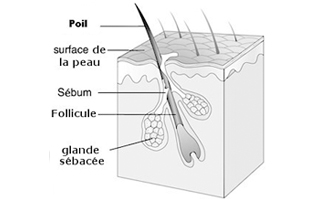 Acne is a skin infection caused by the bacterium Propionibacterium acnes. Gram positive bacilli, which is anaerobic and purple, acts on the sebaceous follicle, which, when mixed with excess oil, releases cytokines. These molecules are responsible for inflammation. Using intense pulsed light to treat acne works by heating the porphyrins produced by the “Propionibacterium acnes” bacteria, causing its destruction. Exposure of the porphyrin (chromophore) to the light activates its excited state, resulting in the formation of singlet oxygen, a condition in which the oxygen atom is very reactive in contrast to its ground state which is a triplet state. Singlet oxygen combines with cell membranes to destroy bacteria. The photo-thermal effect also allows for the aseptic treatment of the area. Light filtration between 420 - 1200nm corresponds to an optical penetration depth between 0.5mm and 2mm in order to act intensively on the sebaceous glands that lie on the surface. It filters out all wavelengths except the blue light. In addition, pulsed light works on acne scars by stimulating the production of collagen and elastin by the fibroblasts.
Acne is a skin infection caused by the bacterium Propionibacterium acnes. Gram positive bacilli, which is anaerobic and purple, acts on the sebaceous follicle, which, when mixed with excess oil, releases cytokines. These molecules are responsible for inflammation. Using intense pulsed light to treat acne works by heating the porphyrins produced by the “Propionibacterium acnes” bacteria, causing its destruction. Exposure of the porphyrin (chromophore) to the light activates its excited state, resulting in the formation of singlet oxygen, a condition in which the oxygen atom is very reactive in contrast to its ground state which is a triplet state. Singlet oxygen combines with cell membranes to destroy bacteria. The photo-thermal effect also allows for the aseptic treatment of the area. Light filtration between 420 - 1200nm corresponds to an optical penetration depth between 0.5mm and 2mm in order to act intensively on the sebaceous glands that lie on the surface. It filters out all wavelengths except the blue light. In addition, pulsed light works on acne scars by stimulating the production of collagen and elastin by the fibroblasts.
Intense pulsed light is generally indicated for retentional or inflammatory acne of either medium or minor severity. It is used as a substitute to long term antibiotics as drugs such as isotretinoin which are already banned in several countries. Medical treatment of acne using pulsed light is a real medical benefit to patients.
Protocol
Treatment time: 10 - 12 weeks according to the severity.
Intervals of 1 or 2 weeks between each treatment.
AR : 420 - 1200 nm
Proven results
According to our clinical study conducted by the Group for Research and Evaluation in Dermatology and Cosmetology (GREDECO) on volunteers recruited from the Hospital Pitié-Salpêtrière in Paris, the subjects who completed treatment of acne were satisfied with the results.
Eliminate your imperfections.
There are two types of pigmented lesions ; “solar lentigo”, which is associated with exposure to the sun, and “senile lentigo”, which is associated with the ageing of the skin, smoking, and general pollution. The two main factors responsible for pigmented lesions are exposure to the sun and the ageing of the skin as we get older. Pigmentation is a result of the multiplication of the number of melanocytes, whose volume and activity increases as a result of these factors. Using IPL at a wavelength of 550nm allows an optical penetration depth of 2mm. With this filtration, the chosen target is melanin on the skin surface, which then absorbs the light energy resulting in a build-up of heat causing its destruction. After the session, the destroyed particles are then removed by the “phagocytosis” principle, which is particle removal by intracellular digestion.
A short flash duration and a high power allows protection and comfort for the skin.
Pathological types of pigmented lesions such as nevus naevocellulires and Dubreuilh melanosis cannot be treated with intense pulsed light.
Protocol
Treatment time: 1 - 3 sessions are necessary at intervals of 1 to 2 weeks between sessions.
PL: 550nm - 1200nm
Proven results
According to our clinical study conducted by the Group for Research and Evaluation in Dermatology and Cosmetology (GREDECO) on volunteers recruited from the Hospital Pitié-Salpêtrière in Paris, the subjects who completed treatment for pigmentation had very satisfactory results.
Vascular lesions (telangiectasia, erythrose, angiomas, rosacea, small varicosity, diffuse redness) are caused by blood vessels that become visible under the skin. The pulsed light is absorbed from a wavelength of 500nm by oxyhaemoglobin, the targeted chromophore in the treatment of vascular lesions. The light is converted into heat, which causes significant heating of the vessel walls and leads to their destruction by photocoagulation and thrombosis, without damaging the surrounding tissue. After treatment, the target vessel is then naturally removed from the body, leaving no trace.
Intense pulsed light is particularly effective on superficial vascular lesions like blotches, spider veins, redness, etc.
Protocol
A short flash duration and high power allows the protection and comfort of the skin.
Treatment time: 1 to 3 sessions are required at intervals of 1 to 2 weeks.
VR dual-band: 500 - 670 and 870 to 1200nm
Proven results
According to our clinical study conducted by the Group for Research and Evaluation in Dermatology and Cosmetology (GREDECO) on volunteers recruited from the Hospital Pitié-Salpêtrière in Paris, the subjects who completed vascular treatment had very satisfactory results.
Clinical Study
To demonstrate the quality and effectiveness of DERMEO’s medical devices, a clinical report was officially established by the GREDECO laboratory. This study was performed on voluntary patients, who were recruited at the hospital of Pitié Salpêtrière in Paris (FRANCE).
This study enabled DERMEO to assess the performance of its pulsed light device on several subjects in the real conditions of consultation.
Regarding efficiency, DERMEO has obtained excellent results (hair removal, and rejuvenation) in almost all configurations and within the due time.
For aesthetic treatments such as rejuvenation, spot care and hair removal on light and dark skin, a high level of safety and efficacity has been demonstrated.
VISIBLE AND EFFECTIVE RESULTS IN COMPLETE SAFETY

Clinical references:
Dr. Sylvie Boisnic
Dermatologist, Pathologist
Research Director GREDECO
Consultant at the Hospital de la Pitié-Salpêtrière.
..............................................................
Dr. Luc Benichou
Consultant Medical Doctor GREDECO
.............................................................
Dr. L. Ben Slama
Stomatologist
............................................................
M. C. Branchet
Bio-chemist
............................................................
Mme. Sophie Blondel
Pharmacist Research Officer of GREDECO
* The products and treatments proposed may be subject to specific regulations. Users or purchasers are responsible for verifying the regulations applicable in the country of use, as well as the specific conditions of use of this equipment with the correct authorities and their distributor.
In the United States of America the authorized claims by the F.D.A. for our device are: removal of unwanted hair from phototype skin I to V, treatment of benign cutaneous vascular lesions from phototype skin I to III, treatment of benign pigmented epidermal and cutaneous lesions from phototype skin I to III, treatment of inflammatory acne from phototype skin I to III.

